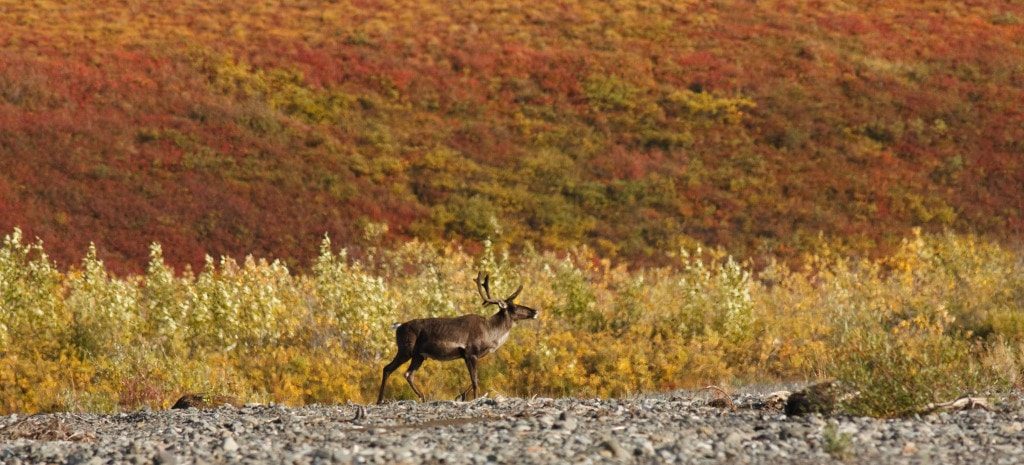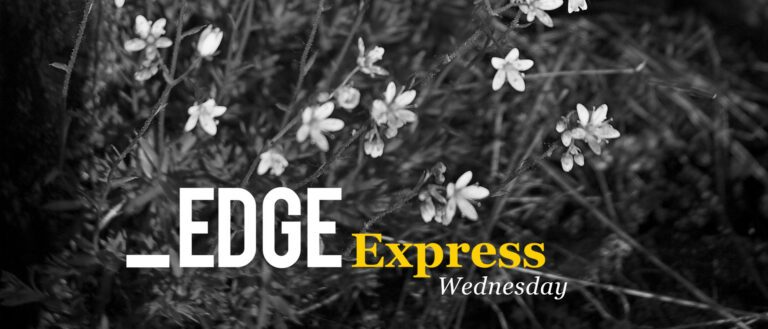As the Bathurst Caribou herd continues its decline to perilously low levels, the GNWT and the Tłıc̨ho Government have agreed, at least in principle, to ban all hunting of the herd and to begin killing wolves that prey on the herd.
Their joint three-year plan for herd management went before the Wekʼèezhìi Renewable Resources Board today for a mandatory public hearing. The board is being asked to comment on the plan before returning it to the department of Environment and Natural Resources in May for implementation.
Along with expanded monitoring initiatives, the two principal changes in the plan to manage what “is variously described as ‘precarious’, ‘a crisis’ and ‘an emergency’” are the complete halt on Bathurst Caribou hunting — including the limited Aboriginal harvesting of caribou for ceremonial purposes that was allowed under the previous agreement — and a wolf harvesting pilot project which aims to kill between 40 and 100 wolves each year for the next three years.
Although the causes of the Bathurst herd’s astonishing population decline, 96 percent since 1986, are attributed to a wide range of factors — changing weather (and its effect on vegetation and bugs), mass forest fires and industrial development all likely playing significant roles, according to the ENR presentation — the plan focuses on hunting and predator control as two things that can be feasibly targeted.
“Hunter harvest of caribou is one of the few factors directly affecting mortality rates that we can control,” said ENR caribou specialist Bruno Croft. “It is unlikely that harvest is one of the main drivers of the overall caribou cycle, or long-term fluctuation in caribou numbers. Those have occurred with or without substantial hunting harvesting. However, harvest can become a considerable contributor to the decline of a herd if the harvest is large relative to herd size, is largely made up of breeding cows, and if the herd has a underlying declining trend.”
Croft pointed to the Cape Bathurst and Bluenose West herds, which both saw stabilization of population after a total ban and significant cap on harvesting were respectively implemented in the 2000s. And after the Bathurst harvest was reduced by around 95 percent in 2010, he said, the herd saw a brief period of stabilization (although it began sharply declining again in 2012).
As for wolves, their total number and effect on the herd isn’t well-known. But according to Croft, “there clearly are still wolves on the Bathurst range, and their importance as a source of caribou mortality and as a limiting factor for caribou’s life is greater in a declining herd at lower numbers than in a larger herd.”
The planned wolf “harvest” (both the Tłıc̨ho and ENR have been careful to avoid the word cull) will be run from “field camps near large lakes within the Bathurst Mobile Conservation Zone during winter months (January-April), but away from concentration of wintering caribou” and conducted by Tłıc̨ho hunters according to “cultural teachings from Tłıc̨ho Elders.” Hunters will be trained and paid between $200 and $800 per wolf, depending on the condition of the wolf carcasses and the marketability of the pelts.
There have been wolf bounties in place in the territory for several years already, but the hunts haven’t specifically targeted the wolf packs preying on the Bathurst herd, and the majority of the wolves killed have lived in community landfills rather than in the Bathurst migration range.
Over the coming years, ENR is planning to study the pilot program and determine if a wider harvest (read: proper cull) is appropriate. They’re also in discussions with the Government of Nunavut to implement the hunting ban and involve Nunavut hunters in the wolf harvest, as the Bathurst herd’s calving grounds are on the eastern side of the territorial border near Bathurst Inlet.
Health of the herd
While the complete hunting ban and the wolf harvest program are only partial solutions, the hope seems to be that changing the rates of predation might alter the situation on the ground just enough to prevent the herd from completely disappearing — something that’s looking increasingly probable. If nothing changes, there’s a strong indication the herd will continue its rapid decline. All three “vital rates” which are used to predict the herd’s health are well below the levels needed to stabilize or increase the population:
Cow Survival Rate: To achieve stability in population, 80-85 percent of cows in a herd need to survive every year. The most recent data suggests that between 2012 and 2013 that rate was around 78 percent.
Calf Recruitment: Likewise, for the population to remain stable, 30-40 calves per hundred caribou need to survive their first year to be “recruited” into the herd. Between 2013 and 2014 only around 22 calves per hundred were surviving.
Pregnancy Rate: Pregnancy rates should be at least 80 percent in a healthy herd; based on data from the 2015 season, only an estimated 60 percent of the cows were pregnant.
All of this suggests, according to ENR predictions, that the herd will likely be below 15,000 by 2018 if the female caribou survival rate does not change.







